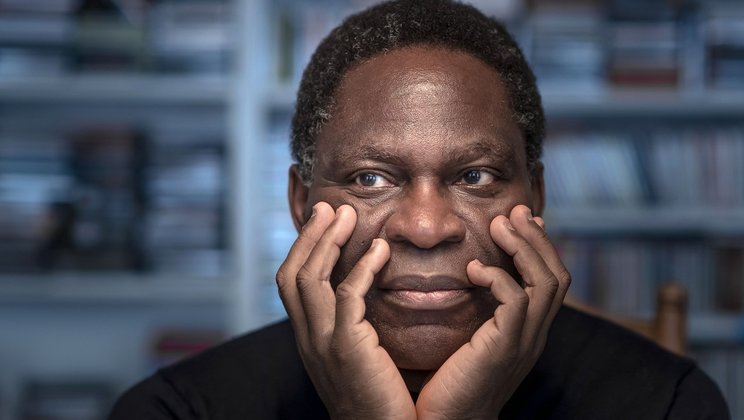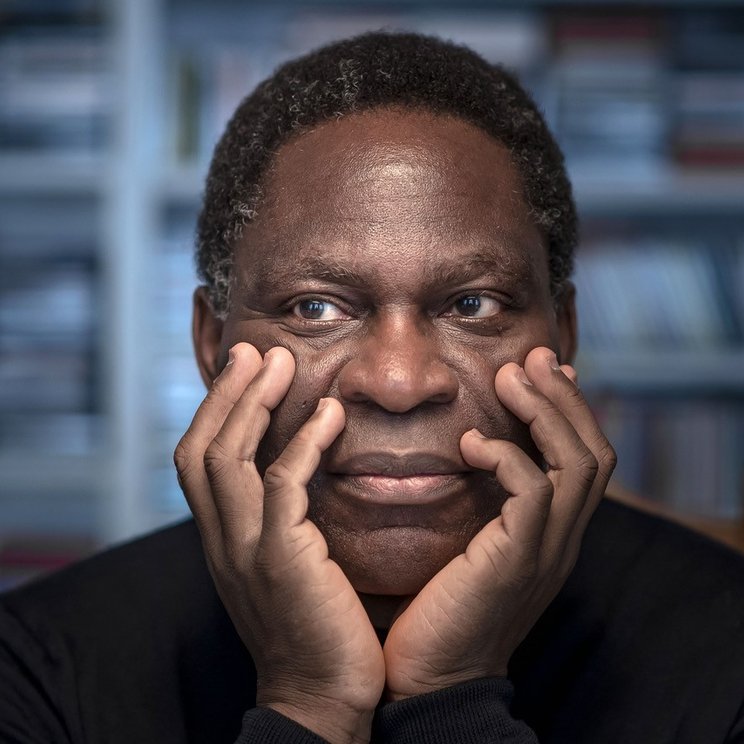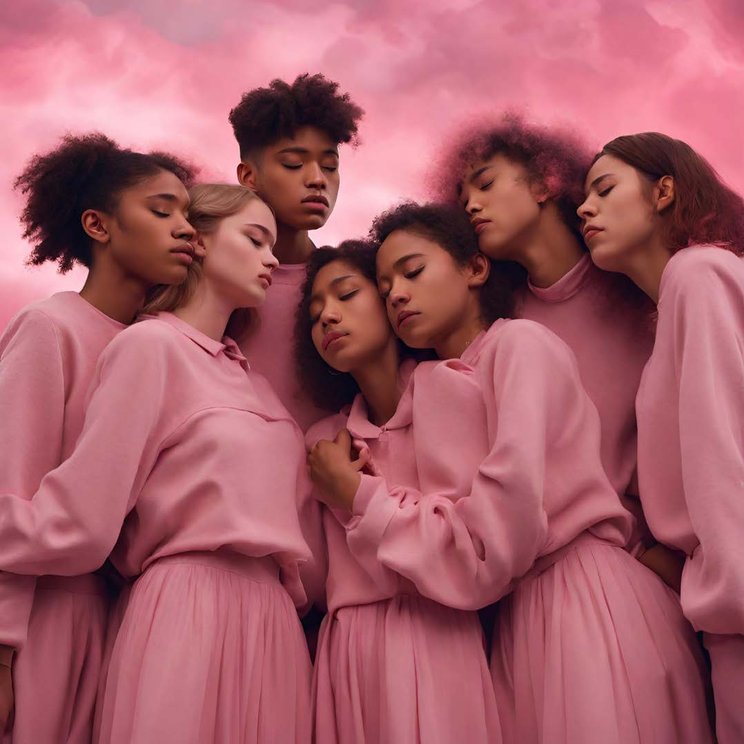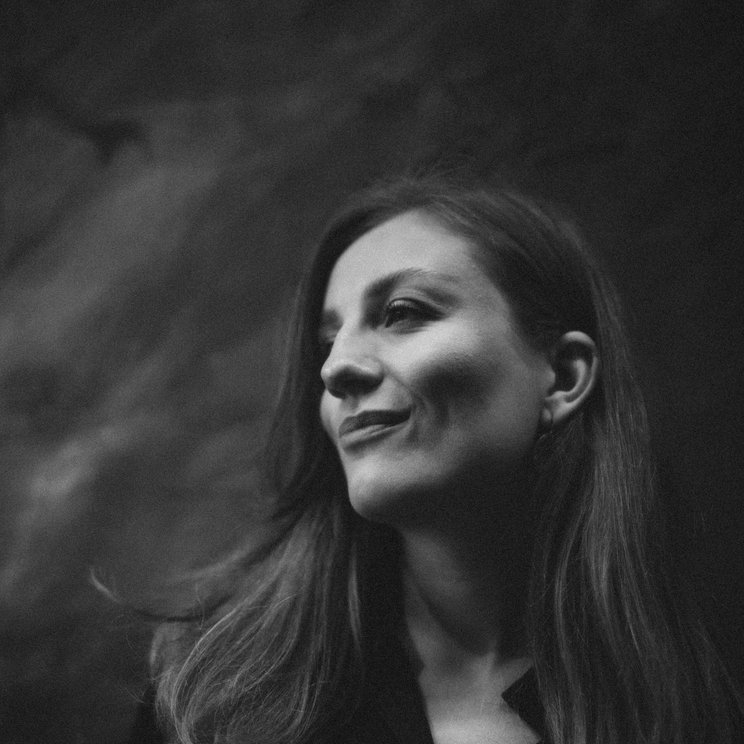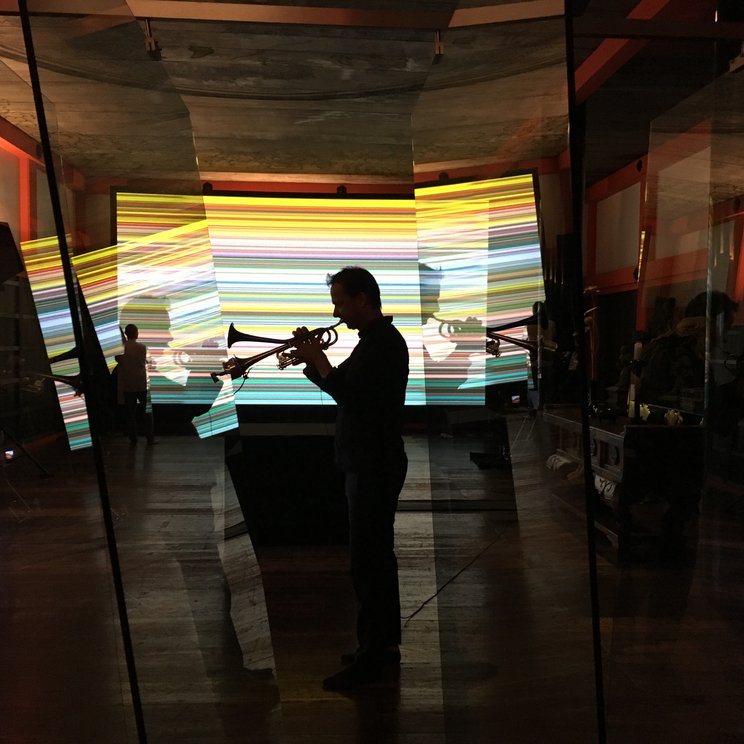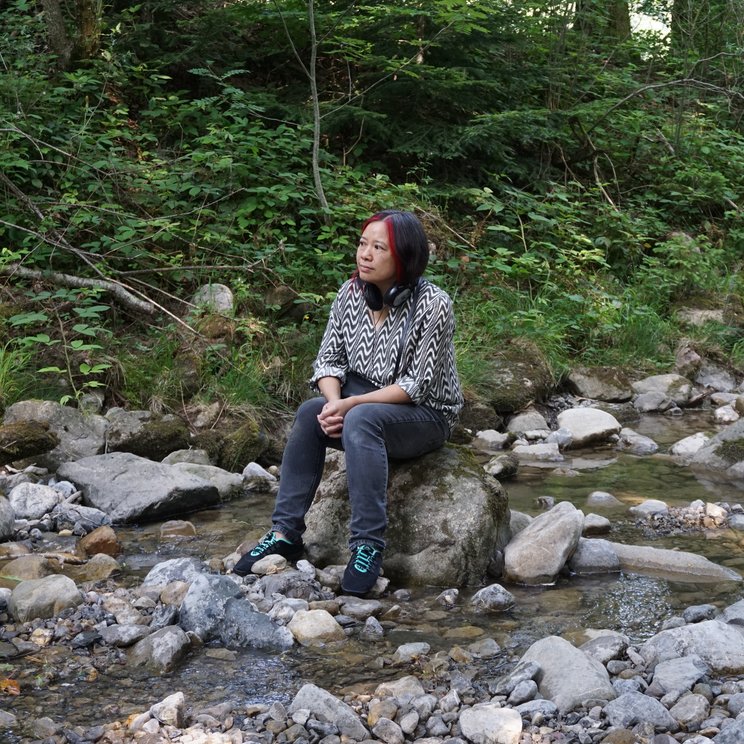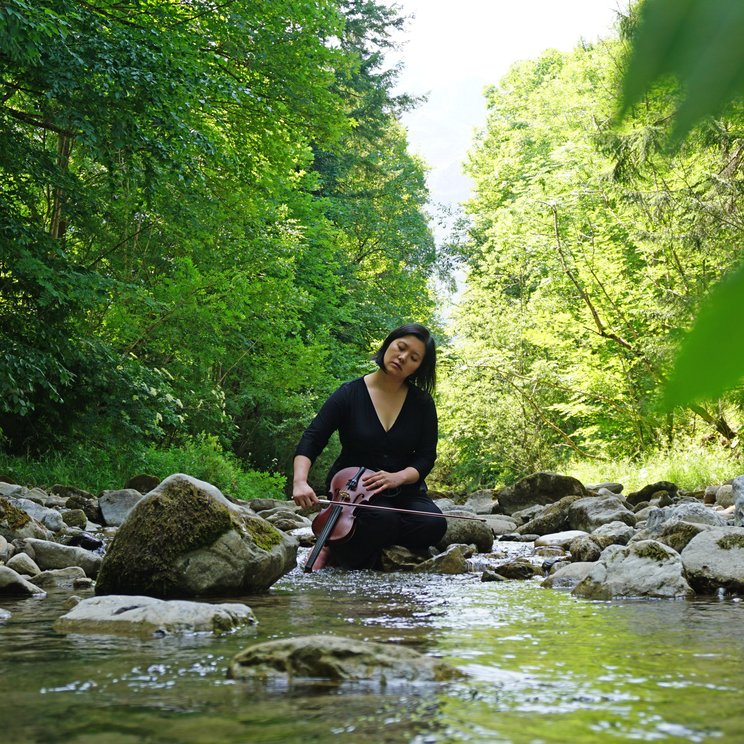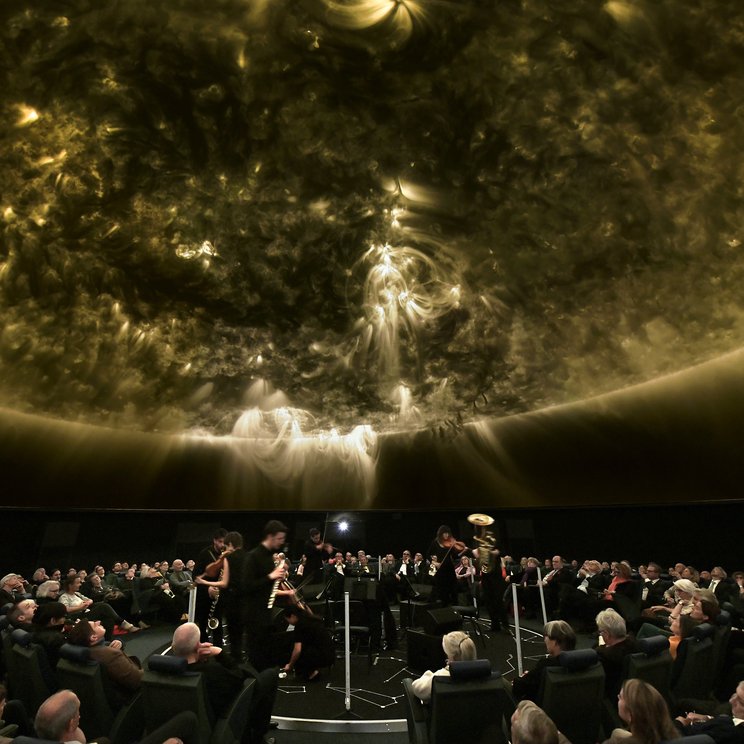"Death/Life" — concert 4
Concert programme
Here you can find the free concert programme for the Concert 4 "Death/Life".
Program notes
-
Charles Uzor on "8’46’’. George Floyd in memoriam" (2019–21) and "Katharsis Kalkül. George Floyd in memoriam" (2023)
how should i say
I wrote 8’46’’. George Floyd in memoriam in reaction to the murder of George Floyd on 25 May 2020 in Minneapolis. Many were confronted with the video showing Derek Chauvin pressing his knee on Floyd’s neck until he physically could no longer breathe. I felt heartbroken. 8’46’’ has no “score” but a few stage directions. No sound of music, just breath. And the almost inappropriate wish to connect in front of the void – in the sense of an absolute absence of what could be.Soon after 8’46’’ I wrote Bodycam exhibit 3, a second memorial for George Floyd. Bodycam tries to find a dynamic sensation of the explicit brutality of Floyd’s murder. All three protagonists – the police, the witnesses and Floyd – interact in orchestral groups. Each musician is given a “score” of audio clips cut from the police officer’s bodycam. Each “character” is portrayed by two players who search each other listening and playing unisono.
The two Floyd pieces show two aspects of the scene:
1) Floyd’s breathing
2) The protagonists’ interactions (police, witnesses, Floyd)
A third aspect, the listener (or something that would give the listener some redemption) felt missing. But more and more the idea of redemption proved tricky. As in Aristotelian drama, purification comes after unimaginable horrors and the pouring of swine blood over our heads. What if the horror never stops? What if any sense of catharsis were turned upside down and all melodies and harmonies went in retrograde, rendering redemptive calculations obsolete?Katharsis Kalkül, the third piece in the cycle, has a proper score, music that is interrupted by a tape that discusses the legitimacy of using a tape at all. Is the use of an audio file that has been heard by millions online an exposure and instrumentalization of the witnesses and their reaction to the obscenity of the scene? Are the audience and the ensemble also exploited by being confronted with words that one hardly dares to say? Do my means of artistic expression have to be restricted to their legal challengeability, or is it more about respect, my inner motivation and the way of speaking to the other person?
Katharsis Kalkül moves simultaneously forwards and backwards through a chain of 108 chords. Catharsis is at the same time anticipated and lost. Appeasement kicks in before the drama. In the end, it is the same as in the beginning, like on a wheel of eternal return. There is one characteristic instrumental feature in the percussion: Whereas in Bodycam exhibit 3 the small drum cuts time in a rigidly militant manner, in Katharsis Kalkül the cymbal accompanies the chords as from afar with constant rolls, which create a veil over the orchestral sound. Just as we like to veil ourselves in utter sadness and escape from the view of others, the sound of the cymbal covers what we may feel as the unspeakable gist of the scene.
It is time to question the Aristotelian, possibly flawed catharsis rendering and its abundance of cynicism in the justification of the blood of others. There are names and real lives that matter: Trayvon Martin, Aiyana Jones, Michael Brown, Freddie Gray, Renisha McBride, Tamir Rice, Tyre Nichols, Eric Garner, Walter Scott, Breonna Taylor, Nicholas Thomas, Dontre Hamilton, John Crawford III, Meagan Hockaday, Eric Harris, Walter Scott, Jonathan Ferrell, Sandra Bland, Yvette Smith, Timothy Russell, Malissa Williams, Tony Robinson, Samuel DuBose, George Floyd, Leonard Allen Cure … as well as every name of unnamed victims of violence.
The cycle ends with us as best witnesses.
More information on Charles Uzor and his work can be found here.
-
Liza Lim on "Multispecies Knots of Ethical Time" (2023)
This is a work about time: about our individual finiteness and about the ecological crisis. The protagonist is a river – a symbol for transience and (endangered) continuity. In a video by Morena Barra, the performer Winnie Huang communicates with the life-worlds of the river. The River Being’s polyphonic voices open up the possibility of a radical imagination of otherness and an expanded sense of personhood. This work is part of a larger project to join the arts to wider movements of multispecies justice that take up the moral, political, and legal claims of animals, plants, rivers, forests, and ecosystems, as bound up with the fate and well-being of humans.
1. Calling the Ancestral River
The River is a sentient elemental being of enormous creative power made up of multiple life-worlds.We dream with rivers.
We can conceive philosophies of time and time relations because we have encountered real rivers.
The river is neurologically ancient in us – it is part of our sensorium, our cultural DNA, shaping how we imagine concepts of time and energy. It’s deep inside our bodies and our language: stream – streaming, current – currency, rivulet – trickle – flume – channel, flux – outpouring – cascade – torrent, drought and abundance, transience and continuity.
The opening part of the work is a ceremonial calling forth, a caressing, a veneration of the river, or actually, a specific river: the Eigenthal-Rümlig that flows in the subalpine Eigenthal valley in the Canton of Lucerne overlooked by the Pilatus Mountain.
2. Polyvocal River
The Rümlig river is full of voices. It is a complex ecosystem of beings: plants, animals, birds, insects, waters, winds, air, rocks, earth and more. The Rümlig is an incredibly melodious river: it pulsates with high and low pitches, deep rumbles and the finest champagne fizz of bubbles as its waters flow over rocks of all sizes and shapes, passing through pools of varying depth, grottos and channels.Water and rocks – resistance creates music!
The river’s polyphonic voices open up the experience of more-than-human subjectivities, the possibility of a radical imagination of otherness and an expanded sense of selfhood. The gestural performer Winnie Huang communicates with the “more-than-human” life-worlds of the river. In the film, she plays the river’s flux with a violin dipped into the water. The flowing water acts as a “bow” that sounds the violin strings producing an otherworldly and beautiful aquatic aeolian effect (this idea and approach builds on the work of sound artist Bennett Hogg and filmmaker Merrie Snell). [This idea of playing a river with a violin was developed by the sound artist Bennett Hogg in collaboration with artist and writer Merrie Snell. They have given their permission/blessing for the further development of these techniques in this work] The performer, Winnie, is inside the total scene, and at the same time is herself being “played” by river and world. She brings the icon of the river (the “real” river and the river of time) to the stage. The recorded sound and film are articulated and sculpted live by the performer using a MIDI controller (a Genki Wave Ring). The digital instrument allows the scored gestural actions to be translated into fine-tuned transformations of sound (just like performing on an acoustic instrument).
The ancient Greek Philosopher Herakleitos said something we can all feel in our bones: one can never step into the same river twice. The river embodies the transience of life, an impermanent current in which any moment can only be lived once. We see the randomness and the brevity of our time as the river restores or reminds us of our human size, tiny within the universe.
3. Pornographies
Yet, tiny as we are, humans have ushered in the Anthropocene, the era in which human activity is having a catastrophic impact on the Earth’s functioning at a global level. We’re in a time of extinctions… Our greed and hubris, distractions and destructiveness have created toxic feedback loops in climate systems. This composition was written at a time of 420ppm CO2 in the New Calendar. Global temperatures have risen approximately 1.2 degrees Celsius above the pre-industrial temperatures of the 1800s. We’re seeing other kinds of rivers: water rushing down roads and into subways and shopping malls, sweeping away cars and houses and people… We’re living ina runaway time of tangled accelerations that lead to a death spiral.
There is a vertigo in the movement of time: an unravelling forwards, backwards and upside down of displaced patterns. Runaway time, dilated time, wasted, sliced-up, knotted, damaged time…
4. Resistances and Flow
Environmental Humanities scholar Deborah Bird Rose writes of life as an embodiment of sequential and synchronous time: “embodied time is always a multispecies project. It follows that life depends both on the sequential processes of generational time/gift and on the synchronous processes of multispecies nourishment.” [Rose, Deborah B. “Multispecies Knots of Ethical Time”, In Environmental Philosophy, Vol. 9, No. 1, Special Issue: Temporal Environments: Rethinking Time and Ecology (Spring 2012), 127-140. p.131. Article accessed 20 Jan 2023. http://blog.wbkolleg.unibe.ch/wp-content/uploads/Rose2012_Multispecies-Knots-of-Ethical-Time.pdf] Winnie Huang comments: “I feel especially moved by these ideas of birth being a condition of a gift, but also a need, and this entanglement of being nourished and nourishing. This communication between sequential and synchronous, ‘these processes and patterns intersect to form dense knots of embodied time.’ [Rose, Deborah B., p.131] It’s a constant reminder of our interconnectivity and dependency, diversity and perspectives, our communications and relations in every direction constantly.” [Private email with Winnie Huang, 25 November 2022. quoted with permission]In the case of species extinction, there is a “double death” since there is no regenerative future for a group; but then those deaths also unravel the futures of other life systems… James Hatley writes: “What is important about a death narrative is that one’s own passing away becomes a gift for those who follow as well as an address to them.” [Hatley, James. 2000. Suffering Witness: The Quandary of Responsibility after the Irreparable. Albany: State University of New York Press]
I’m interested in this “calling out”, vocative gestures that are full of desire for the entangled encounter.
What do we bear witness to? Where are the silences?
And what of the River Being’s desires? The Birrarung (or Yarra) River in Australia, whose voice also appears in this work, has been declared a “living entity”. The Whanganui River in New Zealand; the Mutuhekau Shipu (or the Magpie River) in Canada; the Amazon River in Columbia, and rivers elsewhere, are being granted legal “personhood”. This legal tool is being used to recognise natural and legal rights for rivers amongst which are the rights “to flow, maintain biodiversity, be free from pollution, and to sue.” [Berge, Chloe. “This Canadian river is now legally a person. It’s not the only one.” National Geographic, April 16, 2022. Article accessed 19 August 2023. https://www.nationalgeographic.com/travel/article/these-rivers-are-now-considered-people-what-does-that-mean-for-travelers]
5. The Unborn watch us
Coiled within us are our ancestors and the as-yet-unborn. Considered like this, “we” are not alone but belong to a collective subjectivity travelling in time. We are the ancestors of the future and our particular “knot” in time is, Deborah Bird Rose suggests,a gift that should be oriented towards responsibility.
Breathing in and out, listening, the musician at the river weaves a musical figure that passes across violin strings, rock and water. The violin bow is rocking back and forth, in grief or ecstasy, un-consoled or compassionate. An emerging song is like an inner quickening (that moment when a mother first feels their baby moving within). Can we surrender to a de-centering of the human to expand into the vibrancy of a multispecies kin-making?
6. Multispecies knots
Breathing – touching – listening. That is the basis for a communication with the elemental sentiency of water and rock. We see the performer take up a Chinese calligraphy brush and make marks on a rock with water. This “water score” or “secret poem” disappears into the rock as soon as it’s written. The human being rubs up against the consciousness of the river. How can one say that?!That’s what music and poetry are for: unknowability, astonishment.
Several lines from the writings of Etel Adnan are woven into the rock writing:
“I lived exclusively by my own wits, this is why I am a river.” [Adnan, Etel. 2016. Night. New York: Nightboat Books]
“Not seeing rivers is also another way of dying.” [Adnan, Etel. 2012. Sea and Fog. New York: Nightboat Books]
“I am talking to you because I need you, and to need means to love. Let’s see. Am I just establishing inventories? Where am I?” [Adnan, Etel. 2020. Shifting the Silence. New York: Nightboat Books. Also see https://lithub.com/etel-adnan-contemplates-aging-amid-the-california-wildfires/]
“There’s an equilibrium we all possess, while it eludes us, and the possibility, regardless, of swimming twice in the same river… but when, and where…” [Adnan, Etel. 2020. Shifting the Silence New York: Nightboat Books. Also see https://lithub.com/etel-adnan-contemplates-aging-amid-the-california-wildfires/]A hum keeps the connection and the current alive. We can venerate the beauty of the visible face of nature and attune to its invisible spirit. That is a form of prayer in which the sublime power of place fills us with wonder. We follow the course of the Rümlig River upstream, passing the three locations where the performer was seen bowing a violin, listening; washing the instrument at a grotto; dipping the violin into a cascade, touching the flow, stroking rocks, and playing a singing bowl. We pass by and glance at offerings of flowers and fruit, made to the river. Rising, high up above the trees, we see the Pilatus.
The world is the living river, the mountain, the sky, the many creatures including us.
In grief and in wonder we demand a multispecies justice for our kin, for the river.
More information on Liza Lim and her work can be found here.
